Westminster Abbey is one of the London landmarks that I always think takes an entire day to itself. I know some people ‘do’ it in an hour and a bit, but it is the sort of place that richly repays a more leisurely, lingering visit. And there’s far more to it than it being simply where Wills and Kate tied the knot! There are countless historic and artistic details to see in Westminster Abbey. Scroll down for my self-guided Westminster Abbey tour.
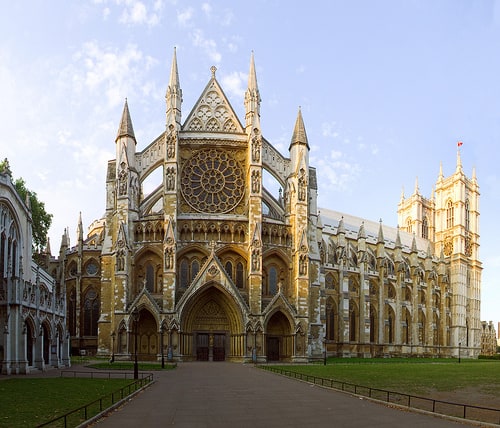

Originally a monastic church (founded by Edward the Confessor, though none of his building survives), it became the coronation church of the English monarchs; only two since 1066 have not been crowned here, Edward V and VIII – and that’s because they weren’t crowned at all (Edward V was one of the ‘Princes in the Tower’ who disappeared mysteriously and Edward VIII abdicated to marry Wallis Simpson). It’s not surprising then that it holds the tombs of many English kings and nobility; but it also fulfills part of the role of the French Pantheon, with Poet’s Corner commemorating English writers.
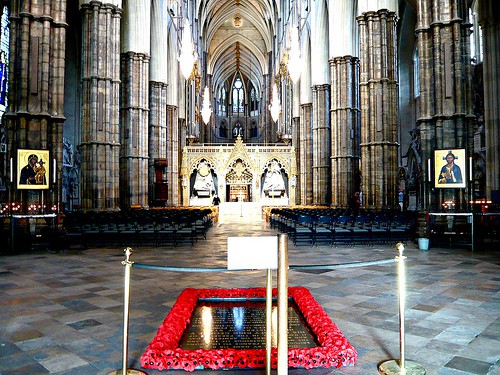
What to see in Westminster Abbey
Most visitors head there for its history – the tomb of the Unknown Soldier, the Coronation Chair (now minus the Stone of Scone though, which has been returned to Scotland). But there is also a huge amount of art history in the Abbey – as well as some oddities. I’ve mixed them up together in this article; I’ve also suggested some ways you can link your visit with other nearby monuments and sights, for instance going on to the National Gallery or Charing Cross or across the road to Westminster Hall.
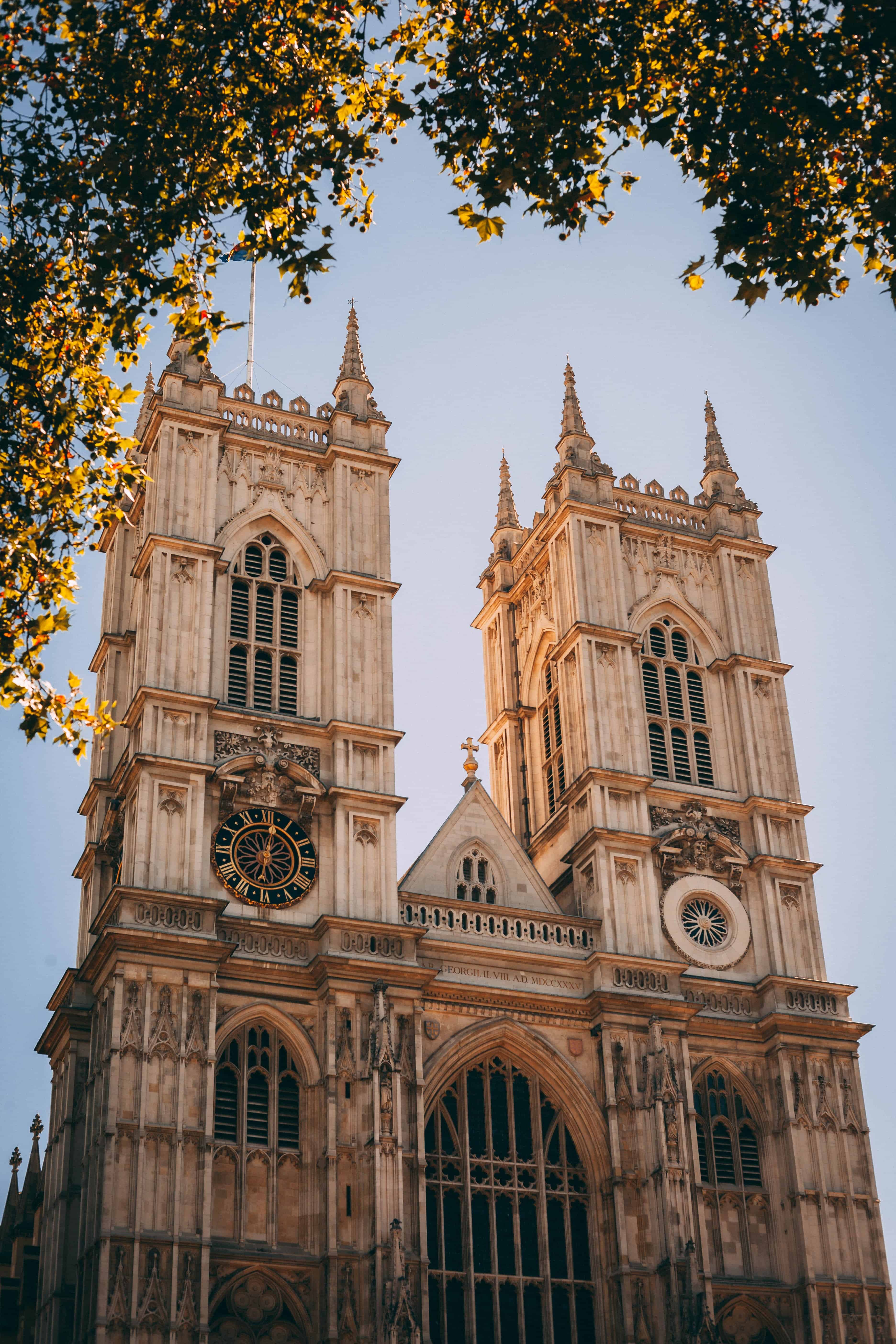
By the way, the monuments are actually quite a good way to acquaint yourself with the evolution of western art, from the Middle Ages through to the present day.
You can quite easily follow the changes in taste – medieval kings lying in state, formal and linear; the Renaissance tombs, more realistic, showing their inhabitants reclining or kneeling; the eighteenth century with its weeping angels and figures of death with his scythe, and often with symbols taken from real life – cannons, telescopes, ships; and even modern works, such as the stained glass window commemorating the airmen of the Battle of Britain.
Self-guided Westminster Abbey tour
Great vault
As you come into the Abbey you’ll see the great vault that covers the nave. People will often tell you that medieval architects were anonymous – but this one certainly wasn’t; it’s the work of Henry Yevele, started in 1362. We know a lot about Yevele; he worked at Canterbury Cathedral and on several of the king’s castles and palaces, and he also built the amazing roof at Westminster Hall, just across the road. So as you go out of the Abbey, take another look at the vault; and then, if you can get on a tour of the Palace of Westminster, you’ll be able to compare his other great work with this.
Painting of Richard II
The painting of Richard II that hangs at the west end of the Abbey is something many visitors miss. Richard was a great patron of the arts, which he used to promote his concept of sacred kingship. Politically, it was a failure – he was deposed by Henry IV and died in suspicious circumstances not much later on – but artistically, it created the most elegant and beautiful art of the English middle ages. He was also a patron of the poet Chaucer. You can compare this painting to his tomb effigy (also in the Abbey), then walk up the road to the National Gallery to see the Wilton Diptych, a tiny gem-like painting of the king with his patron saints and choirs of angels.
Cathedral Museum
The royal effigies in the cathedral museum are an incredible witness to history; they were not intended to decorate the tomb, but were placed on top of the coffin for the royal funeral. Again there’s a comparison to be made; Edward III’s funeral effigy has the drooping mouth of an old man killed by a stroke (and originally had eyebrows made out of dogs’ hair) – but his fine tomb effigy shows the mature king in his pride, with flowing hair and sad dignity.
Chapel of Henry VII
There are only three competitors for the prize of best English Perpendicular Gothic – Gloucester cathedral cloister, King’s College Chapel and the wonderful Chapel of Henry VII here in the Abbey. This is certainly the most fanciful of the three, with pendant bosses like stalactites and the most complex tracery in its vault – and the outside, with its pinnacles and golden weather vanes, is also exceptional.
Henry VII was a king who stood at the frontiers of the middle ages and the Renaissance and it’s quite fitting that while the chapel is the last flourish of Gothic, his tomb and effigy should be by an Italian artist, Pietro Torrigiano, who had studied with Michelangelo (and reputedly smacked the senior artist one on the nose during a dispute). You can see how realistic the figure is compared to earlier tombs – the drapery looks real, the face is a naturalistic portrait (the tomb of Margaret Beaufort, Henry’s mother, is also by Torrigiano). Look out for the heraldic badges that decorate the chapel – the daisy or Marguerite (for Margaret), the Beaufort portcullis, the lions of England and fleur de lis of France, and Edward IV’s badge of the falcon with padlock.
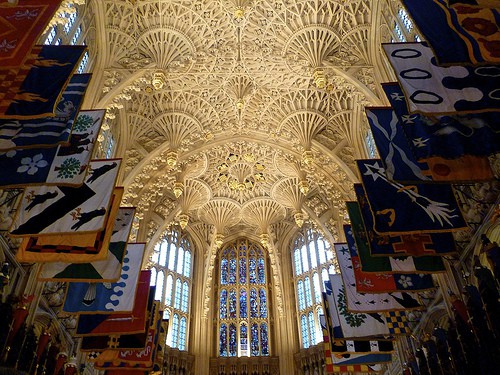
Coronation Chair
Of course you’ll want to see the Coronation Chair. But it’s just a chair, albeit a very ornate medieval one. The thing I really love about it though, is the set of little lions that support it. The chair dates from 1297, but the lions were only added in 1727 as replacements for ones that were a couple of hundred years older. But oh my goodness don’t they look disgruntled! They certainly want you to think they’ve been oppressed by the massive oak weight of the chair for more than just a couple of centuries.
Effigy of Eleanor of Castile
The effigy of Eleanor of Castile is a lovely work by William Torel, goldsmith, dating from 1291. Torel made it by casting a bronze figure by the lost-wax technique, then gilding it; the sculpture is noble and magnificent. Torel actually made two – one for the cathedral in Lincoln where Eleanor died, and this one for where she is buried. Along the way, her heartbroken widower Edward I erected Eleanor Crosses where her body rested – you can see a replica of the original at Charing Cross just up the road. Ironically, Edward has no effigy at all – just a plain marble tomb. Torel also made the effigy for Henry III.
Newton’s tomb
Newton’s tomb is a magnificent creation of the Enlightenment to contrast with the medieval work you’ve seen elsewhere. Little boys use the telescope and play with the prisms. Does the globe look a bit strange? That’s because it’s a celestial globe showing the zodiac, not the earth – and a figure of Astronomy sits on top of it.
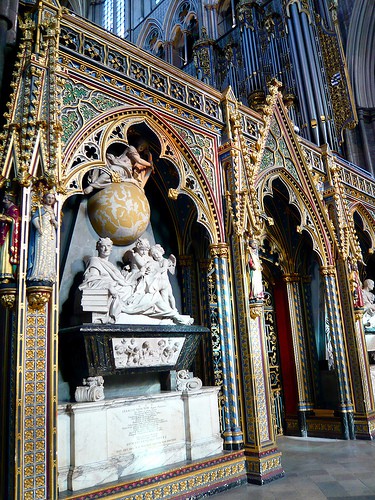
Grave of Ben Jonson
In the north aisle, don’t miss the tiny gravestone of Shakespeare’s contemporary Ben Jonson, with its inscription: ‘O rare Ben Jonson’. Its small size is explained by the fact that he was buried standing up – to save paying for a larger space!
West Front
The West Front of the Abbey is one of my favourite London fakes. It’s not medieval at all, even though it looks it. It was in fact designed by Nicholas Hawksmoor and Christopher Wren, whose other works are uncompromisingly modern (like St Paul’s Cathedral, for instance). If you want to see a real medieval façade, look at the north entrance, opposite St Margaret’s church, and you’ll see the difference.
Elizabeth I
Elizabeth I, if you ask me, got the short straw when they handed out Renaissance art. Her grandfather Henry VII got a magnificent tomb by the Italian, Torrigiano; she got a work by Flemish artist Maximilian Colt which, while majestic, and probably realistic, certainly doesn’t show her at her best. A hook nose, a sour frown and a double chin. She also has to share her grave with her half-sister, Mary I. Since Mary imprisoned Elizabeth and might well have considered having her executed, I don’t think either of them would have been too keen on the tomb-share.
The little cradle
Much cuter is the monument Colt made for Sophia Rosula Stuart, the baby daughter of James I – a little cradle. He also made the memorial for her sister Mary Stuart, who died at just two and a half. Both of them are in the north aisle of Henry VII’s Chapel.
Heraldic beasts
Heraldic beasts come in all sizes and shapes – the porcupine at the feet of Lady Frances Sidney is my favourite (in St Paul’s chapel), bristling with real spikes in blue and gold – though the ferocious red lion on the tomb of Mary Queen of Scots runs it close.
Chapter house
Don’t miss the chapter house, with its single pillar supporting the roof and fine medieval tile pavement. Look particularly at the lovely crisp leaves of the capitals, delicate but decisive carving. This chapter house, incidentally, has a place in the history of English democracy – the first King’s Councils were held here, before moving across the way to the Palace of Westminster.
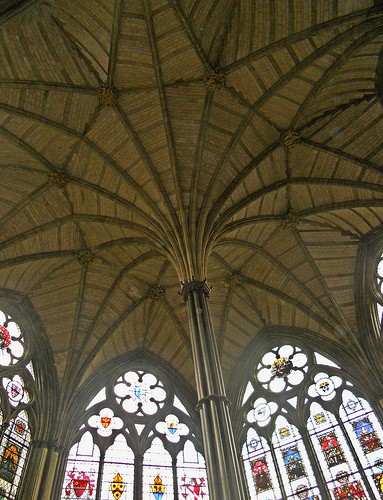
Cosmatesque pavement
I was in two minds about whether to mention the Cosmatesque pavement, because it is apparently quite often invisible. It’s highly unusual, because the Cosmati family of masons worked in Rome and southern Italy, and you hardly ever see their marble inlay work anywhere else. Henry III brought the master Odericus from Rome to create this masterpiece – it’s a strictly geometrical pavement, designed around a quincunx – five linked roundels. It bears an inscription which makes it quite clear that it’s a microcosm, a symbolic representation of the universe; weirder and more convoluted than anything you’ll find in the Da Vinci Code (which leaves it out)!
Islip chapel
Look out for the pun in the Islip chapel. Abbot Islip built it as a chantry where prayers would be said for his soul, and he decorated it with his rebus, a play on words – it shows an eye and a ‘slip’, a small twig or branch, giving ‘eye-slip’, his name. But there’s a second one, as well, on the lintel – a little man falling out of a tree – ‘I slip!’ I bet the good abbot did cryptic crosswords.
Finally…
Please don’t call Westminster Abbey a cathedral. It’s actually a royal peculiar – that is, a place of worship that falls under the monarch’s jurisdiction and doesn’t belong to a diocese, with the status of a collegiate church. It was originally the church of a monastery and was only ever a cathedral for ten years, from 1540 to 1550. If you want to see a cathedral, you’ve got two choices – St Paul’s is the cathedral of the Anglican diocese of London, while a little closer to the Abbey, Westminster Cathedral is the church of the Roman Catholic diocese of Westminster.
You’re most welcome to print out this blog post as your guide to Westminster Abbey. Alternatively, you can purchase an entrance ticket that includes an audio guide.

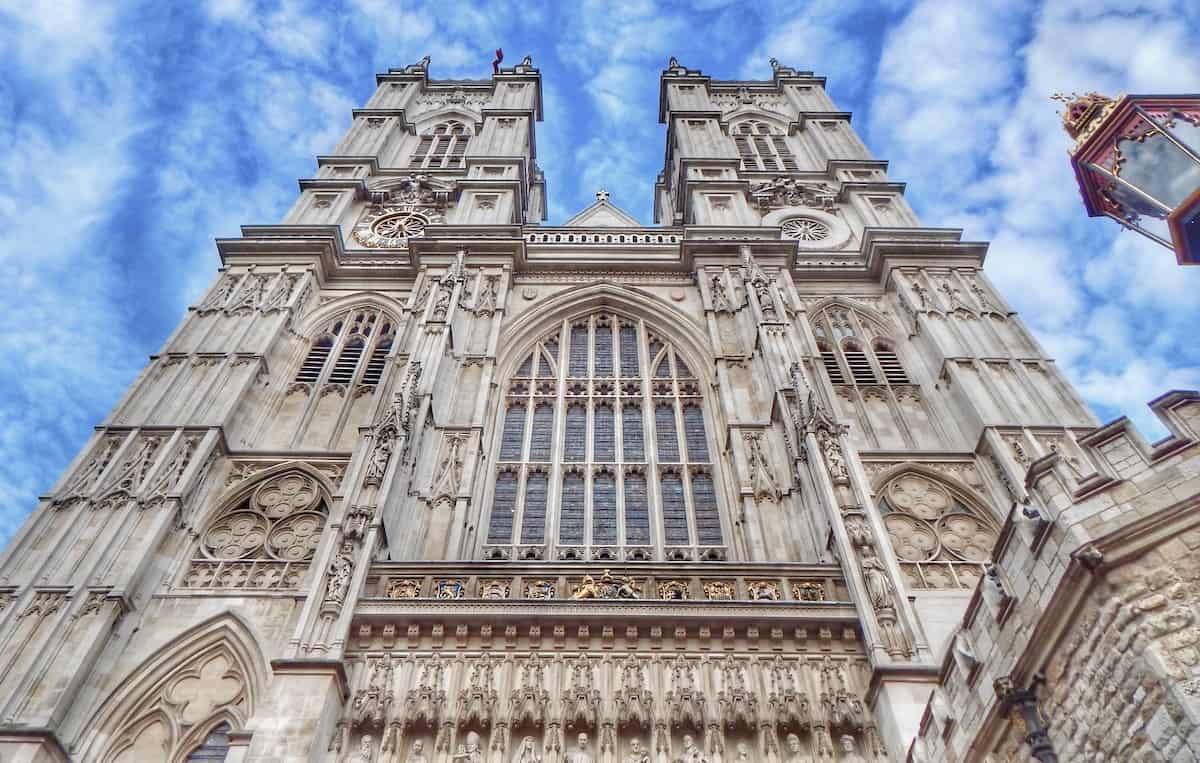
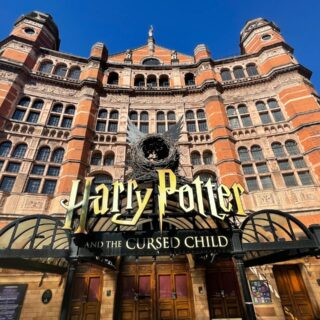
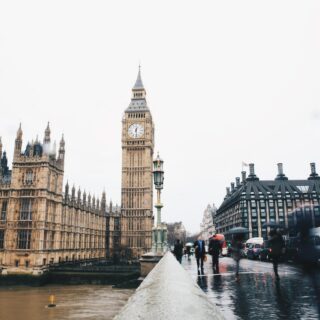
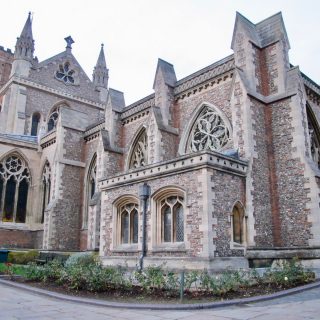
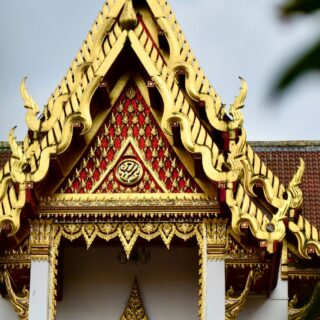






[…] Read my guide to Westminster Abbey […]
[…] Image source […]
[…] much a part of the experience when visiting the capital city as riding on a red double-decker bus, touring Westminster Abbey and watching the changing of the guard at Buckingham Palace.Enjoyed as an alternative to afternoon […]
What a fantastic journey through Westminster Abbey…I was blown away by the abbey during William and Kate’s wedding and loved how they added the greenery to “spruce” up the place…pun intended. This article is a keeper!!
Beautiful! Westminster Abbey is definitely on my list of places to see in England. It looks really interesting.
I’ve always been fascinated by the fact that very few poets are buried in Poet’s Corner. Who ever knew that Chaucer was a tax collector?
We went three weeks ago–had the place almosrt entirely to ourselves–in mid-January. Winter is the best time to go to major London tourist attractions. Found the same ease and comfort at The Tower of London, a few days later. Had a terrific Blue Badge Guide (Abigail) at Westminster Abbey and she covered all the major sights that you have outlined–without making us feel hurried. At the very end, we had to rush through the museum where an ancient altarpiece is the focal point–but that’s because members of our party were exhausted. I did blog about our visit myself. Please see my blog post: http://rochellesroost.blogspot.com
Thanks Lane! That’s a great tip! 🙂
Cheers,
Keith
Great article. You covered everything that we missed. I’ve been twice and was so hurried by the push of crowds, that we missed half of this great Abbey.
Can I recommend go very early?